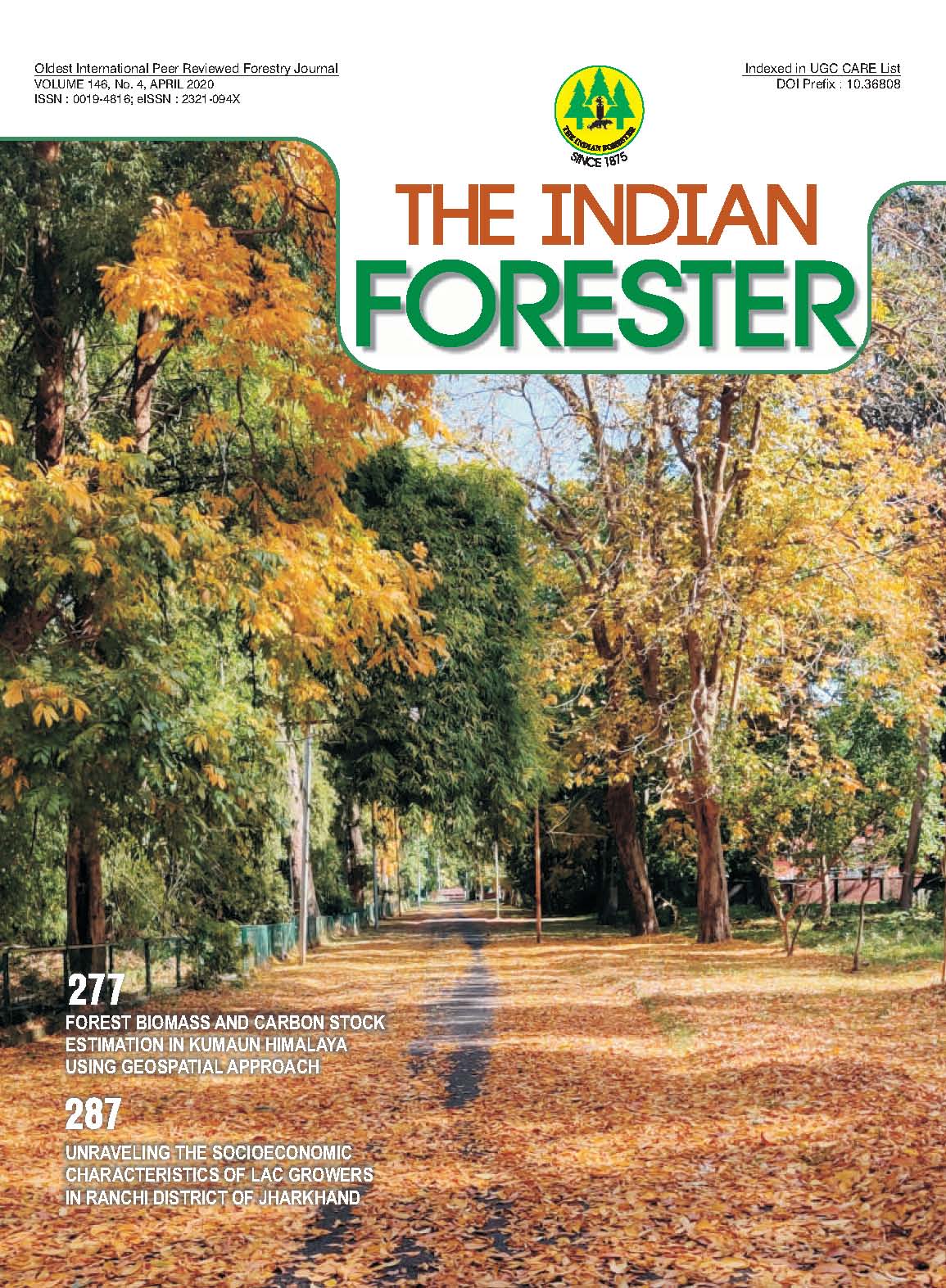Characterisation of Starch from Selected Curcuma Species of Kerala through Microscopy and CHNS Analysis
DOI:
https://doi.org/10.36808/if/2020/v146i4/131339Keywords:
Curcuma, Maranta, Rhizome, Starch, CHNS, SEM.Abstract
Starch isolated from different plant sources are regarded as vital in food industry, where the granule size and shape determine its function and uses. Native starches irrespective of their sources are not desirable for many applications. Many Indian tribals explored certain Curcuma species as source for starch and prepare various food items, mainly considering its medicinal importance. Presently, a range of highly priced starch powders are available in the market in the label of herbal nutraceuticals. Starch from the rhizomes of eight different native Curcuma species of Kerala and Maranta arundinacea (Arrow root) were extracted, characterised and compared. It was found that size, shape and CHNS data of starch is varying and could be useful in taxonomic identification of the species. The species specific features of the starch granules would also be useful to find its adulterants. The study also points out its edible value.References
Banks W. and Muir, D.D. (1980). Structure and chemistry of starch granule. In: The Biochemistry of Plants III (J. Press, Eds.). Academic Press, Newyork. pp.321-369.
Bhowmik S., Das S. and Datta B.K. (2017). Isolation and characterization of starch of some medicinally important zingiberaceae Members, Indian Forester, 143(4): 355-359.
Cheng Z. (2003). Physicochemical properties of sweet potato starches and their application in noodle products, Ph.D. thesis, Wageningen University, The Netherlands: p.33.
Cisneros F.H., Zevillanos R. and Zevallos C. (2009). Characterization of starch from two ecotypes of andeanachira roots (Canna edulis), J. Agric. Food Chem.,7(8):207-211.
Copeland L, Balazek J., Salman H. and Tang, M.C. (2009). Form and functionality of starch. Food Hydrocoll., 23(6): 1527-1534
Green B. and Charity O. (2009). Application of biosystematic and nutritional parameters in the delimitation of family areceae. African J. Basic and Applied Sciences, 1(1-2): 44-48.
Harz CO. (1880). Beitragezursysemafik der Gramineen. Linnaea, 43:1-30.
Kokate C.K. (1994). Practical Pharmacology, 4th Edition. Vallabh Prakashan, New Delhi, p.112.
Pascoal A.M., Di-Medeiros M.C.B., Batista K. A., Leles M.I.G., Liao L.O. and Fernandes K.F. (2013). Extraction and chemical characterization of starch from S. lycocarpum fruits. Carbohydr Polym., 98: 1304-1310.
Policegoudra R.S. and Aradhya, S.M. (2008). Structure and biochemical properties of starch from an unconventional source - Mango ginger (Curcuma amada Roxb.) rhizome. Food Hydrocoll., 22(4):513-519.
Rajeev Kumar P., Rajeev R. and Anil Kumar N. (2010). Studies on Curcuma angustifolia starch as a pharmaceutical excipient. Int. J. Pharmtech Res., 2: 2456-2460.
Rani A. and Chawhaan PH. (2012). Extraction and scanning electron microscopic studies of Curcuma angustifolia Roxb. starch, Indian J. Nat. Prod. Resour, 3(3):407-410.
Reichert E.T. (1913). The differentiation and specificity of starches in relation to genera, species etc.ln: Light and Video Microscopoy, Accademic Press Publication, Washington. p.107.
Sasikumar B. (2005). Genetic resources of Curcuma: diversity, characterization and utilizatioin. Plant Genet. Resour., 3(2):230-251.
Singh N. and Kaur L. (2004). Morphological, thermal. Theological and retrogradation properties of potato starch fractions varying in granule size. J. Sci. FoodAgric, 84(10):1241-1252.
Singh N., Singh J., KaurL., Sodhi N. S. and Gill B.S. (2003). Morphological, thermal and rheological properties of starches from different botanical sources. FoodChem., 81(2): 219-231.
Skornickova J., Sida O., Sabu M. and Marhold K. (2008). Taxonomic and nomenclatural puzzles in Curcuma: the identity and nomenclatural history of C. zedoaria (Christm.) Roscoe and C.zerumbet Roxb.(Zingiberaceae). Taxon, 57(3): 949-962.
Vimala B. and Nambisan B. (2004). Some un-utilized and under utilized tropical tuber crops and their importance in food security. In: Proceeding: National Seminar on Root and Tuber Crops in Nutrition, Food Security on Sustainable Environment, Bhuvaneswar, Orissa. 29-31.
Vimala B. and Nambisan B. (2005). Tropical minor tuber crops, Technical Bulletin, vol. 44. Central Tuber Crop Research Institute, Trivandrum, Kerala, India.
Whistler L. and Paschall E.F. (1965). Starch Chemistry and Technology, Vol. I. New York, p.21.
Whitaker I.R and Tannenbaum S.R (1997). Food Protien. Westport: AVI Publishing Company, pp. 291-301.
Wischmann B., Ahmt T, Bandsholm O., Blennow A, Young N., Jeppesen L. and Thomsen L. (2007). Testing properties of potato starch from different scale of isolation-A ringtest.J.Food.Eng., 79(3): 970-978.
Zeeman S.C., Kossmann J. and Smith A.M. (2010). Starch: Its metabolism, evolution, and biotechnological modification in plants. Annu. Rev. Plant Biol., 61: 209-234.
Downloads
Downloads
Additional Files
Published
How to Cite
Issue
Section
License
Unless otherwise stated, copyright or similar rights in all materials presented on the site, including graphical images, are owned by Indian Forester.





